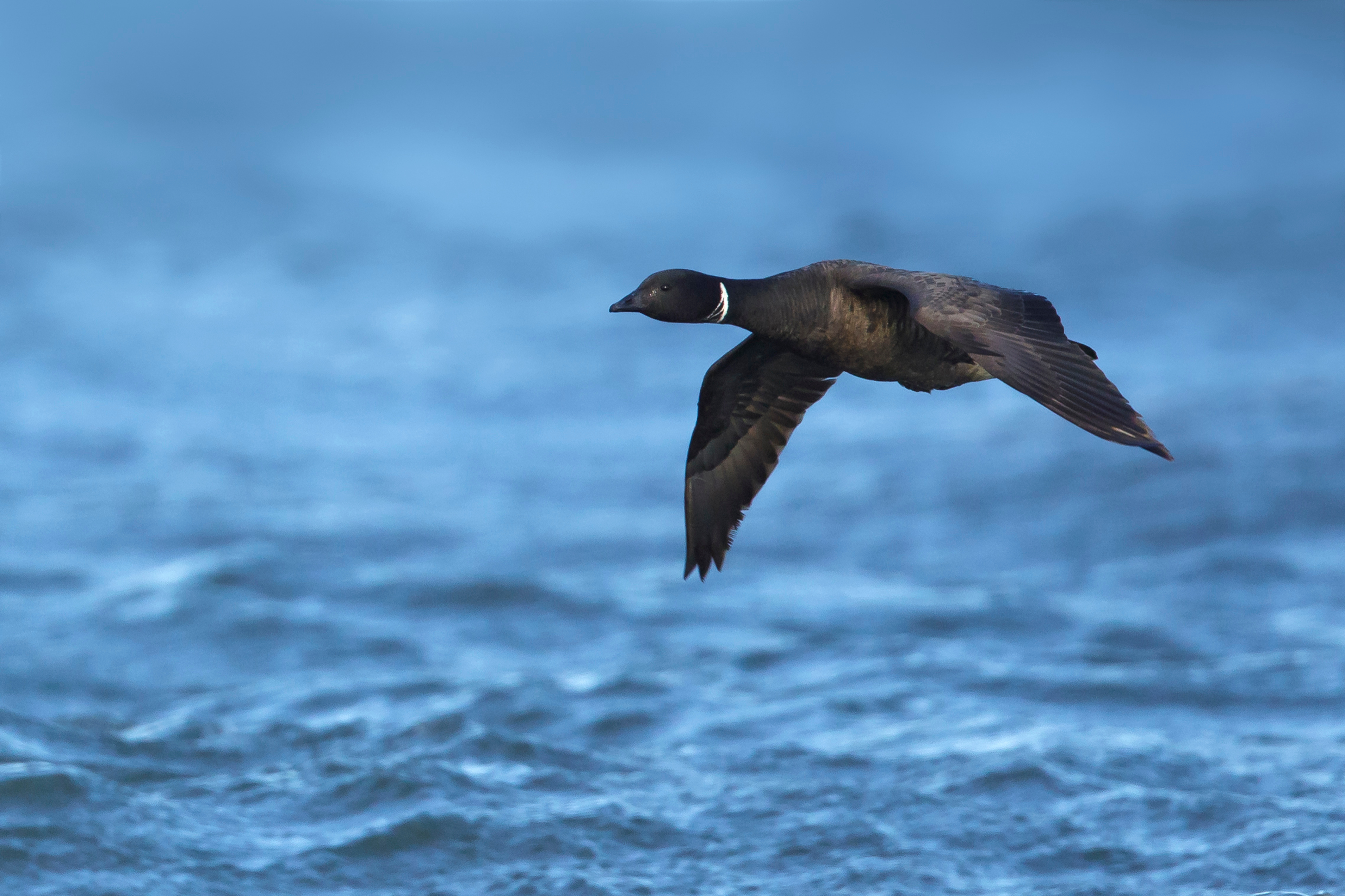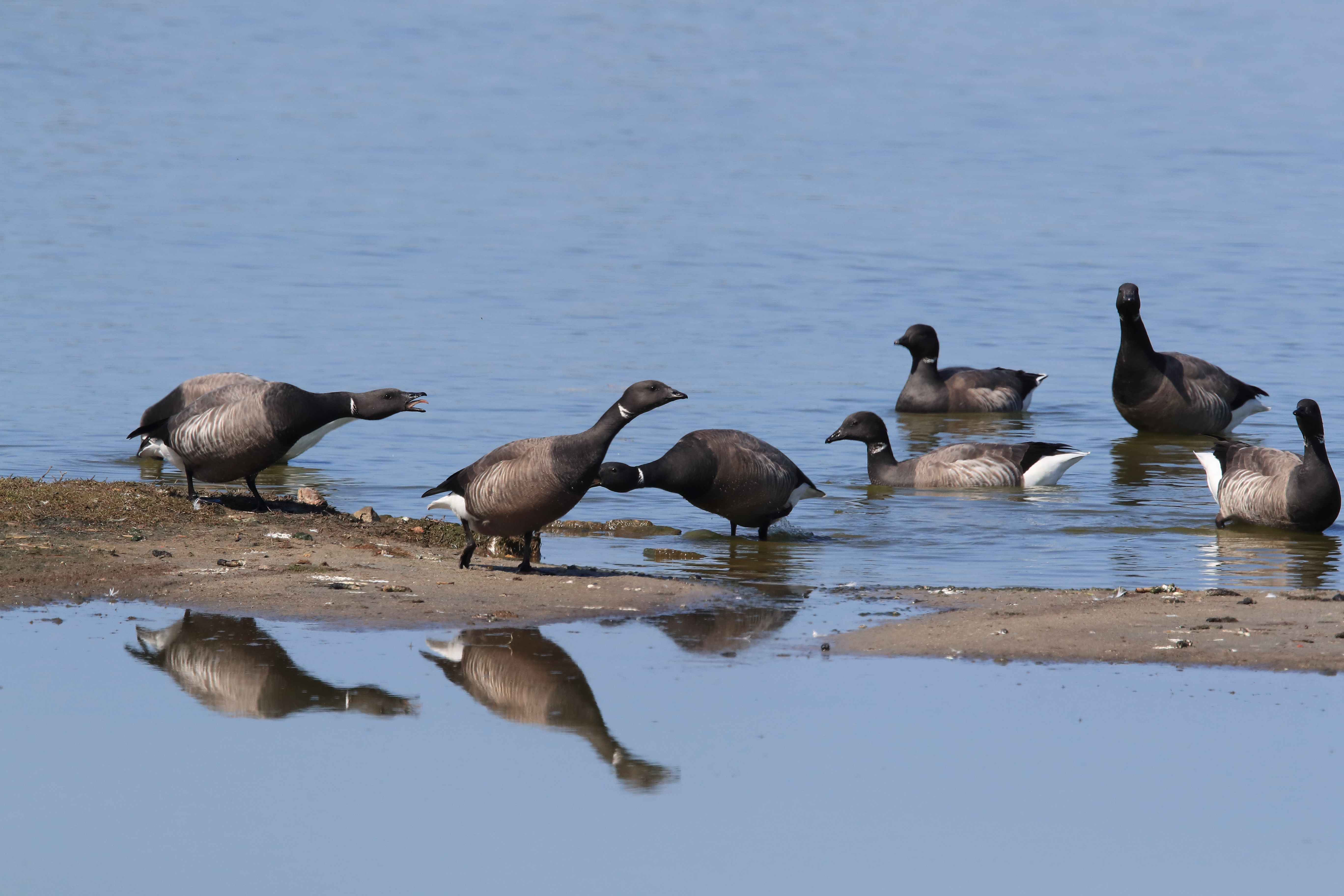Brant, also spelled brent, is a small wild goose that lives in northern regions. Brants are sea geese and are usually seen on or near salt water. They breed in the Arctic tundra. They migrate long distances over the ocean. They spend the winter on the coasts of North America; on the eastern coasts of Japan, Korea, and China; and in northern areas of Europe. 
The brant is 23 to 30 inches (53 to 76 centimeters) long and weighs 3 to 4 pounds (1.3 to 1.8 kilograms). It resembles the Canada goose, but is smaller and has black feathers on its head, neck, and upper breast. Its back is brownish gray. The feathers underneath its tail are white. Adults have white markings on the neck.
Brants are plant eaters. In the Arctic, their diet includes sedges, grasses, mosses, saxifrage, and water plants such as pondweed. In their migration and winter ranges, they eat eelgrass and algae. Human activities have reduced the amount of eelgrass in many areas. In these areas, brants rely more on true grasses for food.
Brants raise young with the same partner for life. But most females also mate with males other than their partner. Brants build nests on the ground. The female lays from three to five small, whitish eggs. The eggs hatch after about 24 days. 
There are three types of brants: the black brant, the dark-bellied brant, and the Atlantic brant. The black brant lives near the Pacific Ocean. The other kinds live near the Atlantic Ocean. The black brant has a dark or black underside. The dark-bellied brant has a gray underside. The Atlantic brant, or pale-bellied brant, has an ash-colored and white underside. Biologists think that in some areas of North America, the Atlantic brant may interbreed with the black brant.
